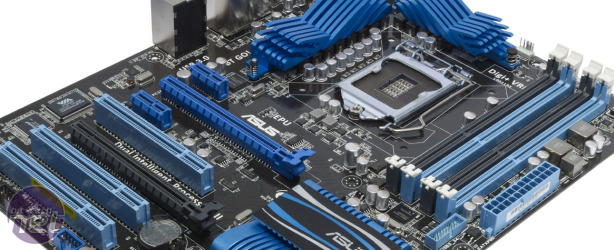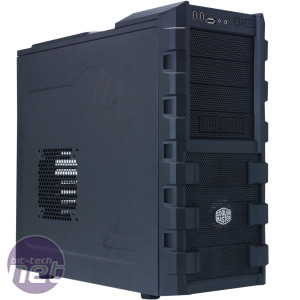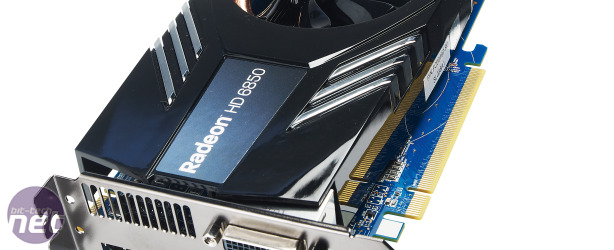PC Hardware Buyer's Guide March 2011
March 10, 2011 | 15:27

Enthusiast Overclocker March 2011
The Enthusiast Overclocker is a PC designed for those looking to build a fast PC without splashing out on pricey hardware. If you're not into speedy video encoding and heavy multi-tasking, but still love your high-resolution gaming, then this PC offers the best balance of performance possible. However, you'll need to apply your overclocking skills to get the most from this system, but then that's half the fun of a DIY build, isn't it?| Enthusiast Overclocker | |||
| Product | UK Price (inc VAT) | US Price (ex tax) | |
| CPU | 3.3GHz Intel Core i5-2500K | £175 | $230 |
| Motherboard | Asus P8P67 | £125 | $170 |
| Memory | 4GB 1,600MHz DDR3 | £40 | $50 |
| Graphics Card | Sapphire ATI Radeon HD 6850 | £145 | $180 |
| PSU | OCZ ModXStream Pro 500W | £50 | $80 |
| CPU Cooler | Gelid Tranquillo | £25 | $40 |
| Case | Cooler Master HAF 912 Plus | £50 | $60 |
| Optical drive | SATA DVD-RW | £15 | $20 |
| Storage | 1TB Samsung SpinPoint F3 | £40 | $65 |
| Overall Price: | £665 | $895 | |
New This Month
We’ve not changed any of the components in our enthusiast overclocker build this month, but nonetheless we wanted to mention the situation surrounding the CPU and motherboard in the build here. As we’re sure you’re all aware, LGA1155 boards with the revised B3-stepping chipsets have started appearing on our fair shores in online retailers. This is great news, but we can’t just wade in and recommend that you run off and buy a new board immediately, as we’ve not yet had a chance to test the revised chipset.As a result, we don’t know what effect the revision may have - SATA 6Gbps speeds could be halved or overclocking potential could be compromised in some way; we just don’t know. As such, we still recommend that you wait until purchasing a Sandy Bridge motherboard at the moment. You’ll be in a much better position once we know how the new chipset performs.

If you simply must buy a system now, then you can of course do so; just be sure that you’re picking up one of the revised boards. Some manufacturers, such as Gigabyte, are changing the name of the revised boards, so it’s easy to tell which boards feature the new silicon. Others, however, are being a little less transparent about the change. Asus, for example, is simply calling the B3 equipped boards the Rev3 versions of its current boards.
On a more positive note, we've seen a number of price drops in this build's hardware over the past month with the prices of the RAM, graphics card, case and hard disk all dropping by a fiver or more. This is offset a little by a sharp jump in the price of the recommended OCZ PSU, but overall the price of the UK build has dropped by a healthy £20 and the US build by $15.
And The Rest
Graphics horsepower is provided by an AMD Radeon HD 6850 1GB. In truth though there is very little to choose between this and the Nvidia GTX 460 1GB. The two cards perform very similarly, cost almost same and are relatively quiet.As a result, it comes down to which of the cards' extra features are more appealing to you. Here, in the mighty bit-tech towers, we value Eyefinity support over PhysX or 3D Vision support so we’ve plumped for the HD 6850. If, however, you’d prefer PhysX support and can’t see yourself using Eyefinity anytime soon, then you’ve got our blessing to sub out the HD 6850 for a GTX 460 1GB.
As we were planning a fairly heavy overclock, we needed to add a great cooler to the build, and we chose the Gelid Tranquillo for its cooling ability and quietness. If you wanted to chill your CPU to an even lower temperature, the slightly more expensive Thermaltake Frio would also serve, as it provides excellent cooling, although it's a little louder than the Tranquilo.
We've also kitted out the machine with 4GB of 1,600MHz DDR3 memory. This is the sweet spot in the memory market at the moment, as these kinds of kits are particularly affordable. Fortunately, you don’t have to worry about memory straps and Base Clock ratios if you’re buying a LGA1155 based system, as nearly all overclocking is carried out via the CPU multiplier.
As such, all you need to do to make sure your RAM is running at its full rated speed is to drop into the EFI and select the 16x memory strap in the relevant menu. If you’re unsure of where this menu is in the EFI, you can check out our Core i5-2500K overclocking guide.
The case we’ve chosen for the build is the Coolermaster HAF 912 Plus, which is a small but capable case. We particularly liked its solid construction and rugged but tidy looks when we reviewed it, and it also features
 a number of neat cable-tidying features that make building a clean PC easy, despite its size. We've recommended the Plus version of the case, which has a black painted interior.
a number of neat cable-tidying features that make building a clean PC easy, despite its size. We've recommended the Plus version of the case, which has a black painted interior.Unfortunately, this version isn’t available in the US for some reason, so we recommend that US-based readers pick up the normal version without the painted interior instead. If the styling of the HAF 912 isn’t your cup of tea, though, you could of course opt for the excellent and similarly priced Xigmatek Utgard, or the slightly more expensive (but extremely quiet) Fractal Design Define R3.
We’ve also packed in the 500W OCZ ModXStream PSU, a cheap SATA DVD drive and a 1TB Samsung SpinPoint F3 hard disk. If you haven't got a copy already, you might want to factor in a copy of Windows 7 as well - if you're confident that you won't be upgrading much, then an OEM copy should be fine, but serial upgraders need the pricier retail version.

MSI MPG Velox 100R Chassis Review
October 14 2021 | 15:04









Want to comment? Please log in.